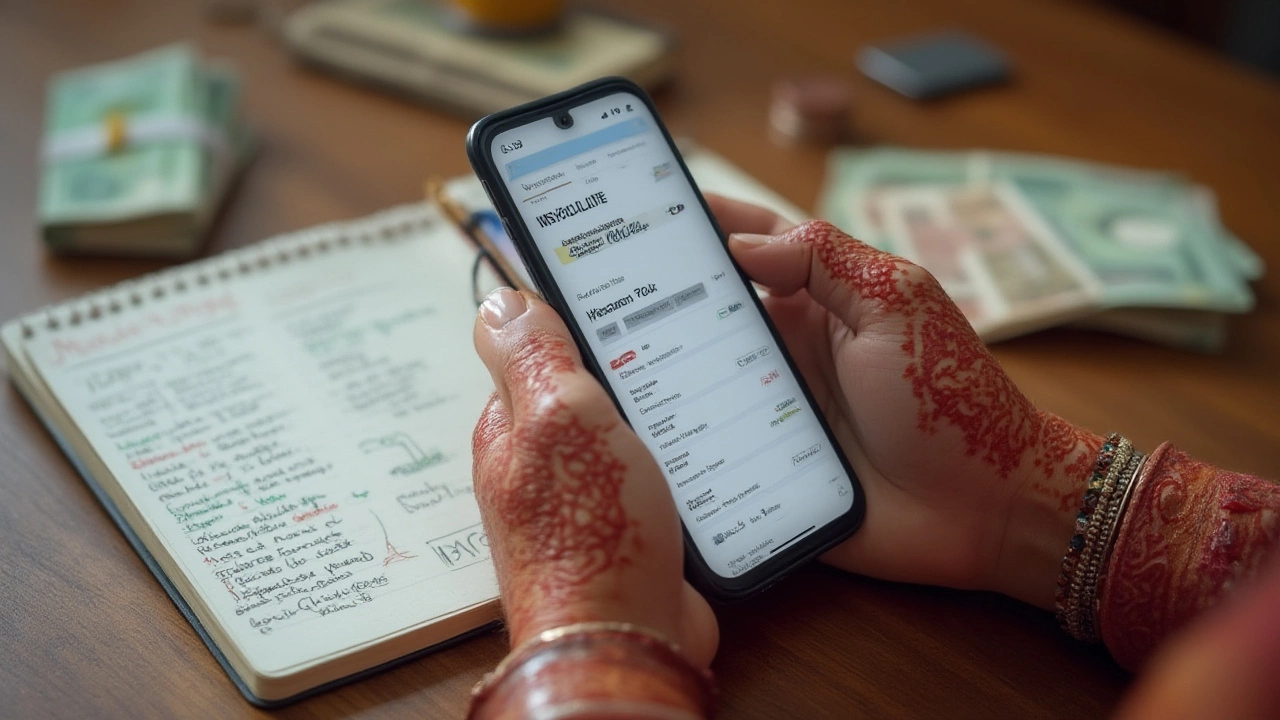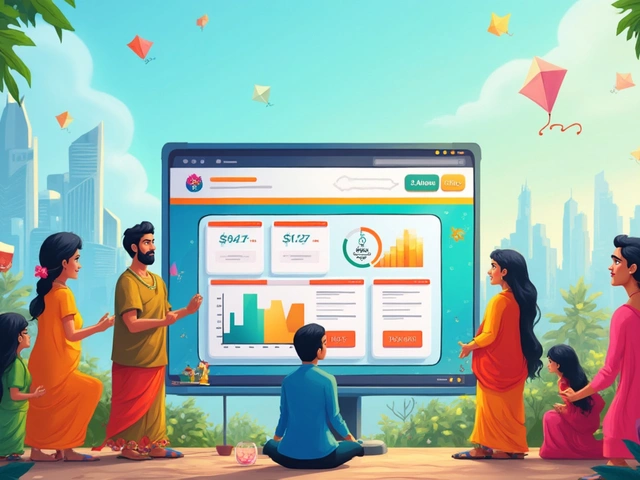Ever scrolled through gorgeous, professional websites and thought, “What would it actually cost to get something like that—say, a solid 20 pages?” There’s no sticker price stamped on these things, and if you ask around, the numbers fly all over the place. I’ve seen everything from under a grand to over $25,000 for what, on paper, sound like similar projects. No secret handshake needed here—I’m laying it all out, whether you’re hiring an agency in Sydney, wrangling with a freelancer, or eyeing that tempting $500 deal offshore. Let’s clear the fog and break down real, current website pricing, minus the techy mumbo-jumbo, so you can budget without any nasty surprises down the line.
What Goes Into the Cost of a 20 Page Website?
If you’re wondering why numbers are so spread out, it helps to know what goes into a 20 page website. It’s not just a designer fiddling with colours and fonts. Here’s what you’re actually buying when someone builds out a full site for you in 2025:
- Design and User Experience (UX): Are you after a custom look or a premade template? A unique, interactive design means more hours and a higher rate. Prebuilt themes keep things cheaper but come with limits.
- Content Creation (the big secret cost): Pages don’t magically fill themselves. If you need someone to write, edit, or translate content (especially for 20 pages), you’re looking at a noticeable bump in price.
- Development Complexity: Do you have forms? Do you need e-commerce? Are you integrating with anything (like a booking tool or CRM)? Custom features take extra skill—and time.
- Platform Choice: WordPress, Squarespace, Wix, or a fully custom job? Squarespace and Wix make basic 20-page sites easy, but if you want something truly unique, WordPress or a ground-up custom build is more flexible (but costs more).
- Responsiveness and Accessibility: In Australia, accessibility standards matter, especially for businesses. Making a site work nicely on all screens and for all users is a must—these hours add up.
- SEO Setup: Simply building a site isn’t enough if you want to be found. Basic technical SEO (sitemaps, meta tags, speed tuning) can take some proper upfront work.
- Hosting and Maintenance: Don’t forget the hosting bill—unless you’re happy for your shiny new site to go MIA. Ongoing care, like security updates, is another recurring fee.
All up, the cost of a 20 page website is less “one thing” and more a shopping cart of services. Agencies and freelancers both break up these lines, but the stacks look pretty similar. The trick? Each part is its own little project. Try plotting this as a family dinner bill—starters, mains, dessert, and drinks. You might think you’ll just have a salad, but then someone orders truffle fries and the whole thing balloons.
You can see how a "simple" 20 page site can run from lean to luxury fast. Earlier this year, a development study in Australia found the average web designer charges $80-$200 per hour, with most 20 page sites landing in the $5,000 to $15,000 bracket for mid-sized businesses. The range is wild, because every business, and every designer, has different needs and standards.

Typical Price Ranges in Australia (2025): Breaking Down the Real Numbers
So, what’s the current market in Australia actually doing? Let’s park the guesswork and look at the ranges, plus who charges them. These aren’t made up numbers—I’ve pulled them from active designer and agency quotes this year, as well as actual invoices from people I know building sites around Sydney and Melbourne.
| Type | Typical Price (AUD) | What You'll Get |
|---|---|---|
| Freelancer (Offshore) | $1,200 - $4,000 | Template-based, basic features, patchy support, usually no original content included. |
| Freelancer (Local) | $3,500 - $9,000 | More flexible design tweaks, local support, often includes basic SEO/setup and some copywriting advice. |
| Small Agency | $7,000 - $18,000 | Custom design, content support, better project management, mobile-first & SEO baked in, training on updates. |
| Mid-Large Agency | $12,000 - $28,000 | Strategy workshops, user research, ongoing care, custom integrations—think "full digital partner." |
Those $500-$1,000 deals look tempting, but usually come with caveats. They tend to leave out things you’ll wind up paying for later—like content migration, stock photos, or even SEO basics. The bulk of Australian businesses land somewhere in the “freelancer local” or “small agency” zones for a solid 20 page build. Big businesses or not-for-profits with accessibility/brand requirements will notch towards the higher end.
Now, there are always extra costs that show up, no matter who you choose. Remember: nobody tells you about ongoing licenses (for plugins or security tools), or hosting upgrades when your website gets more traffic than expected. Good web projects will break down these recurring extras before you sign.
Here’s a tip from painful experience: if someone gives you a dirt-cheap price with everything included, ask about support. Plenty of my own clients—a year or two after launch—have come back looking for someone to fix broken forms or update images. “Who built your site?” I ask. “Not sure, they disappeared.” Happens more than you’d think.

How to Budget Smart: Controlling Website Costs Without Cutting Corners
Sure, a 20 page website can be a pricey project, but there are ways to keep your wallet intact without ending up with a site that looks dated before it’s even live.
- Prioritise What Matters: Start with “must have” features and people-first content. Do you really need 17 different graphics on each page? More isn’t always better—a clear, well-organised site usually works wonders.
- Go Modular: Build the essentials well, and stage fancy features or extra pages for later. Agencies call this a “phased rollout”—but it’s just smart project management. My mate Lucy, who runs a café in Bondi, halved her upfront costs by launching basic pages first and rolling out booking features once the site was paid for by new clients.
- Content Is Gold: If you’ve already got copy and images, you just sliced a hefty chunk off the final quote. No copy? Writers average $200-400 per page for proper business copy, more for technical or legal pages.
- Templates Are Not Evil: These days, premium templates aren’t just cookie-cutter. A smart designer can customise a theme so it feels unique while saving you thousands in design hours.
- Details Save Headaches: Get a written breakdown on what’s included—pages, revisions, plugins, training. Good contracts prevent scope creep, mystery costs, and cranky late-night emails.
- Don’t Skimp on Mobile: Over 70% of Aussie website traffic is now on phones. Cheap sites often forget this and you’ll pay extra to fix it later. Mobile-first is non-negotiable in 2025.
- Ask About Ongoing Costs: Hosting, backups, software updates. Reliable hosting in Australia averages $15-40/month. Maintenance support usually stacks an extra $80-$200/month on top, depending on how much help you want.
- DIY vs. Pro: Tools like Wix or Squarespace tempt you with “build it yourself!” If you’re techy and have time, go for it. But what you save in cash you’ll spend in hours. My neighbour Dan saved $6k building his own, but spent every weekend for three months glued to his laptop while his kids gave up on family movie night. Worth it? Only if your schedule can take the hit.
If you want to negotiate a better price, having a clear brief helps. Detail your brand, pages needed, sample competitor sites you like, and features that are non-negotiable. Vague briefs mean designers pad the quote to cover the unknown—it’s not suspicion, just self-preservation.
And one last insight: think beyond launch date. A website isn’t a “set and forget” deal, any more than a car is. Stuff breaks. Your business grows. Online, every year there’s a new design trend, a Google update, or a privacy law that crops up. Budget for tweaks and support; it’ll save you much bigger bills—and headaches—down the line.
So what will your own 20 page website cost? Add up your real needs, get a few detailed quotes, poke at the hidden extras, and make sure you get support that won’t vanish on you. In 2025, the right builder is half the win. Don’t be afraid to ask “why?” at every step. Websites can cost plenty—but spending smart, and knowing the game, means you end up with a site you’ll actually love showing off—and a bill that doesn’t sting every time you tell your mates about it.



